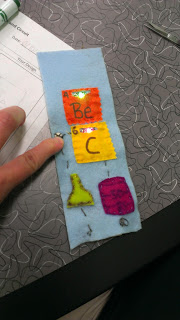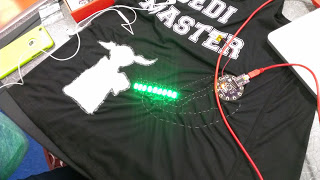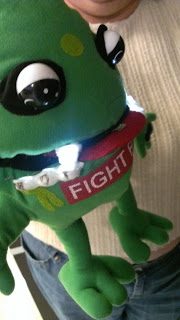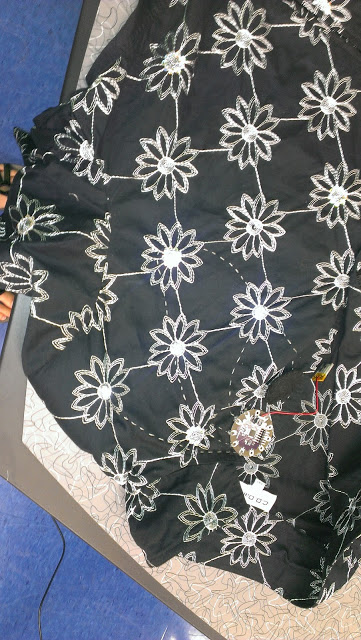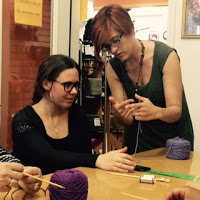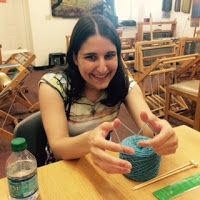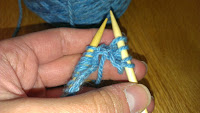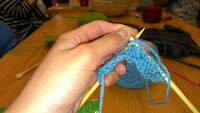Archive | Design Research Blog Posts
RSS feed for this sectionAll blog posts syndicated related to Design Research
Back to the Old Stomping Grounds: Summer Gig
Strangely enough, returning to this agency as a consultant has been such an incredible experience already. I realize just last summer I was sitting among another group of teacher-leaders-in training and anticipating my next chapter as a doctorate student. Attending workshops, meeting scholars within the network, and encouraging my colleagues. I reflect upon my own thinking when I am out in the field, testing my assumptions, and also refining my theoretical frame. Of course these processes are essential if I want to continue developing "researcher eyes" How do I think about my work and the work of others? What are my roles and relationships in a highly-situated activity system?
Welcome Sam Lorentz! – Creativity Labs Introduces New Undergraduate Members
This June, the Creativity Lab Team has introduced two new undergraduate members to the lab, Alex and Sam. They are both working with the BioSim Project and are eager to get started.
--A post by Sam Lorentz
I’m Sam and I am studying Biology, with minors in Psychology, Chemistry, and Biochemistry, at Indiana University. In the fall I will begin my Junior year. I’m an Evans Scholar as well as a member of the Indiana University Swim Team.
The Creativity Labs initially interested me because of my strong desire to get involved in research. As I’ve progressed through my science major, my interest in the entire process of research, from formulating questions and hypotheses to publication, has grown. After hearing about the CL and all it’s innovative work I was certain it was something I wanted to be involved in.
I have spent several summers working as a swimming instructor. I have worked with large groups and individuals ranging from 4 to 12 years old. I really enjoyed getting to work with kids of various age groups on a day to day basis. My most effective lessons were when I made the learning and swimming fun for the kids. After learning this I’m very excited to start working in the field with the BioSim play to learn model. Additionally, I have experience working as an Undergraduate Teaching Assistant in the Biology Department at IU. The Biology students I worked with gave me the opportunity to further my teaching abilities while enhancing my speaking skills. The CL gives me the opportunity to combine research and my experience with children and as a teaching assistant to a single place that’s changing the way we think about education and cognitive development.
With this excellent opportunity to work with such a qualified team, I am hoping to further my own abilities as a researcher, find out if research is something I want to pursue long term, and to make a contribution to science and education. If I were to pursue research after graduation I could see myself working in some sort of cognitive development lab or a biology lab. I’m particularly interested with the human brain as well as the molecular side of biology. Working on the BioSim project is some of the best experience I can get, especially if i pursue cognitive development.
As I’m getting started I’m most excited to start working with kids. I really think that the research here is making a huge difference for kids, both immediately and in the future of education. The complex systems that we work with have incredibly broad applications. By helping young students to master them now, we are creating more thoughtful adults and future scientists that could eventually make revolutionary discoveries.
Gathering STEAM: E-textiles at South Fayette School District’s STEAM Innovation Summer Institute
South Fayette School District in the Pittsburgh area has been a hub for educational innovation for several years now, pioneering a STEAM (Science, Technology, Engineering, Art, and Math) Studio model and hosting the STEAM Innovation Summer Institute to train educators to spread these innovations to their own classrooms. The Creativity Labs has worked with them before (links) to provide professional development in e-textiles. This summer, we were happy to do so again as part of our summer service activities.
As part of the STEAM Innovation Summer Institute last week, South Fayette invited teachers from across the western Pennsylvania area to participate in STEAM workshops ranging from robotics to game design to environmental literacy. Five participants--three science teachers and two Family and Consumer Sciences (FCS) teachers--chose to attend an e-textile workshop hosted by the Creativity Labs and our partners at Sparkfun Education.
For the first two days of the workshop, Sophia from the Creativity Labs led the teachers in learning about circuits, creating an e-bookmark project, making a LilyTiny project of their choice, and beginning to program in Modkit Micro. Even those teachers who were not well-versed in sewing enjoyed the chance to create and personalize projects that combined crafting and circuitry.
On the last two days of the workshop, Angela Sheehan from Sparkfun Education joined Sophia to facilitate working with the ProtoSnap LilyPad Development Simple Board. Angela shared a great many e-textile projects as inspiration, as well as her expertise from a great deal of work on e-textile workshops with teachers and youth. On the last day of the workshop, Angela shared some insulation techniques such as using fabric glue or iron-on interfacing to shield the conductive thread stitches from touching each other and causing dangerous short circuits.
The final projects the teachers created were ambitious and creative! They programmed the LilyPad Simple microcontroller in the block-based programming software Modkit to make LEDs flash and the LilyPad buzzer play music notes. Angela helped some of them to program a momentary switch as well. Finally they sewed all these components onto textiles of their choice, resulting in the projects below:
The Creativity Labs was proud to continue our relationship of innovation with South Fayette School District and Sparkfun Education! We wish our teacher participants all the best as they bring e-textiles back to their classrooms!
Special thanks, as always, to Aileen Owens, Director of Technology and Innovation at South Fayette, who invited us, as well as to everyone who helped her to put together this immensely successful STEAM Innovation Institute.
| To learn more about the awesome e-textile projects pictured here, read the rest of the post below! |
As part of the STEAM Innovation Summer Institute last week, South Fayette invited teachers from across the western Pennsylvania area to participate in STEAM workshops ranging from robotics to game design to environmental literacy. Five participants--three science teachers and two Family and Consumer Sciences (FCS) teachers--chose to attend an e-textile workshop hosted by the Creativity Labs and our partners at Sparkfun Education.
For the first two days of the workshop, Sophia from the Creativity Labs led the teachers in learning about circuits, creating an e-bookmark project, making a LilyTiny project of their choice, and beginning to program in Modkit Micro. Even those teachers who were not well-versed in sewing enjoyed the chance to create and personalize projects that combined crafting and circuitry.
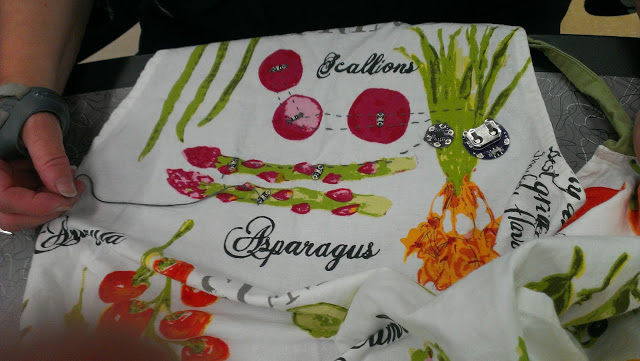 |
| One of the FCS teachers works on sewing LilyPad LEDs to the pre-programmed LilyTiny, which makes the lights flash in different patterns. |
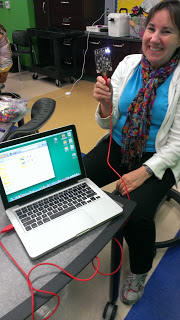 |
| This Science teacher was the first to figure out how to program LEDs to blink in Modkit! |
On the last two days of the workshop, Angela Sheehan from Sparkfun Education joined Sophia to facilitate working with the ProtoSnap LilyPad Development Simple Board. Angela shared a great many e-textile projects as inspiration, as well as her expertise from a great deal of work on e-textile workshops with teachers and youth. On the last day of the workshop, Angela shared some insulation techniques such as using fabric glue or iron-on interfacing to shield the conductive thread stitches from touching each other and causing dangerous short circuits.
The final projects the teachers created were ambitious and creative! They programmed the LilyPad Simple microcontroller in the block-based programming software Modkit to make LEDs flash and the LilyPad buzzer play music notes. Angela helped some of them to program a momentary switch as well. Finally they sewed all these components onto textiles of their choice, resulting in the projects below:
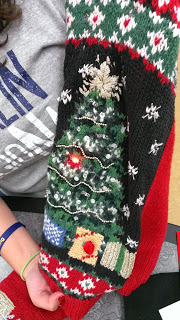 |
| This Science teacher sewed two red and two green LEDs onto this ugly Christmas sweater. Her buzzer plays "Jingle Bells." The LilyPad and buzzer are both on the underside of the sweater. |
The Creativity Labs was proud to continue our relationship of innovation with South Fayette School District and Sparkfun Education! We wish our teacher participants all the best as they bring e-textiles back to their classrooms!
Special thanks, as always, to Aileen Owens, Director of Technology and Innovation at South Fayette, who invited us, as well as to everyone who helped her to put together this immensely successful STEAM Innovation Institute.
Welcome Alex Dailey! – Creativity Labs Introduces New Undergraduate Members
This June the Creativity Lab Team has introduced two new undergraduate members to the lab, Alex and Sam. They are both working with the BioSim Project and are eager to get started.
--A post by Alex Daily
I’m Alex, and I am studying Human Biology with a Concentration in Human Health and Disease and minors in Biology and Chemistry. I am entering my junior year at Indiana University and I am also apart of the Hudson and Holland Scholar Program.
I was initially drawn to join the Creativity Labs because of my desire to do research that involved children and the mental capabilities that they possess. My prior research experience differs greatly. I first started doing research my junior year in high school doing field work with an ecology biology professor. I found this experience to be really helpful especially when it came time to decide where I wanted to attend school. I was able to build upon the knowledge that I had acquired through basic science classes help my professor advance in her study of fish in the local ecosystem. My research has also brought me to a lab though the evo-devo department at IU; The Mozcek Lab. With these experiences I have gained a passion for research and aspire to continue growing as a researcher and with the opportunity from the Creativity Labs I plan to do just that.
My past experiences with children also played a role with me joining the Creativity Lab. I have experience as a summer camp counselor working with children from the ages of 4-17. This allowed for experience with many different age groups. I was able to tailor different skills to fit the personalities and capabilities of all children that I worked with. The experience also showed me that I enjoyed working with younger children and helping them grow and develop socially and mentally. I also have experience as a peer assistant which gave me the opportunity to develop my skills as a leader and as a creative individual in terms of implementing plans and ideas.
CL allows me to take my past experiences and my hopes of being a pediatric neurosurgeon and researcher and put them to use. I am able to see how I can help children learn complex systems and ideas and really understand in depth what connections their brains are making. I am also able to help shape and mold minds for tomorrow, so that not only are children understanding material, but they also gain a desire and passion to go and solve new problems in the world and become the scientists and researchers that this world needs in order to progress humanity, this is what I am most excited about in terms of BioSim; watching the children come to the realization that through creative learning and various creativity methods that they too can understand complex ideas.
Creativity Labs Learns to Knit
This is the second in a series of blog posts about the Creativity Labs’ fiber arts summer workshops. The workshops are experiential opportunities to learn new crafting skills, which have connections to the current Re-Crafting Education project. We are learning from and working with experienced crafters in the community to strengthen our understanding of and connection to the regional fiber arts community.
In this second workshop, the Creativity Labs team took on the next fiber arts challenge during a group knitting lesson at Yarns Unlimited in downtown Bloomington, IN. The local yarn shop has been a key site for observation and instruction during the Re-Crafting project, and offers both a rich collection of beautiful, soft and colorful materials and fiber arts classes for crafters in the community, including knitting, crocheting, and weaving among many more. In addition to the playful storefront, where fibers, yarns and felt as well as knitting needles of all sizes and books inspire to make, the shop contains a classroom dedicated to fiber arts lessons.
The crafting classroom at Yarns Unlimited.
The teaching staff comprises of passionate, skilled and dedicated knitters, crocheters, and weavers. Our instructor, Karen Canapa, has been knitting and crocheting most of her life, attesting to its therapeutic benefits. She works with fiber artists of all levels, but is particularly patient throughout the (sometimes frustrating) first minutes of a new knitter’s quest to get in the loop. Her extensive work with beginner knitters has given her the opportunity to observe and to design effective and fun instructions for a knitter’s first lesson.
Here is a glimpse of what we learned when we picked up our needles:
- The Slip Knot: To start a new project, the knitter can make the first loop to slip onto the knitting needles. This loop is called a slip knot, and the yarn “slips” right onto the needle as the knitter prepares the project. Karen warned us that the slip knot can be “super tricky” to make - we agree with her!
“The [slip knot] is a small knot that leaves a loop on one end,” Karen explained, “and if you pull the two ends, the knot completely disappears. So, it allows us to have a variable size beginning stitch.”
From left to right: Karen shows Anna another variation of the slip-knot technique. Sophia practices making slip knots in the crafting classroom.
- The Cast-On: The first row of a knitted project is the row that is cast onto the needle by the knitter. The knitter will put both needles into the slip knot to make an “X” shape.


From left to right: Putting the needles through the slip knot. Folding the yarn over the needle to prepare for the first stitch. Starting the second row of stitches.
- The Knit and Purl: Knitting consists of two basic stitches: knit stitches and purl stitches. The first stitch the beginner knitter learns is the knit. A series of knit stitches is called the garter stitch pattern. We learned to knit a few rows of knit stitches. We also worked together fix some of our mistakes. In doing so, we were able to see that knitting is actually a process of crafting that generates loops, instead of knots (as some may think). A row of stitches is essentially a connected line of loops! After learning the knit stitch, Karen taught us the purl stitch, which can be thought of as a reverse knit stitch.
Sophia learns to knit and purl across the row on her stitches.
These 3 techniques work together to form a knitter’s first tool kit. The knit stitch itself can be used to create an extensive collection of projects. Together, we learned that the first moments of knitting can be complex and challenging, but as one of us (Kate) writes about in her first weeks as an embedded knitter, mistake-making is a valuable component of the learning process. Karen recommends 15 minutes of practice a day to develop a natural flow to your knitting practice. It may only be a matter of time before the Creativity Labs knits a matching team uniform.

